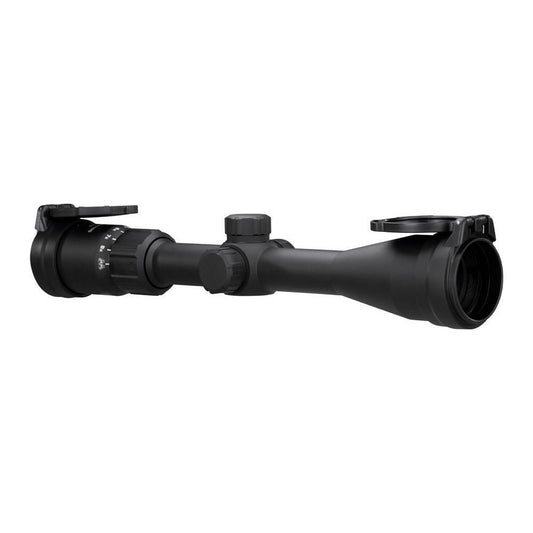

Sig Sauer Buckmaster 3-12x44 1'' Rifle Scope Illum Hellfire BDC SOBM43002 offers practical features for precise shooting. This scope includes a built-in BDC reticle, enabling accurate targeting at distances of up to 500 yards. With six brightness settings for the illuminated reticle, you can easily adapt to changing light conditions, ensuring clear visibility whether you're in bright daylight or low-light scenarios. Its rugged design stands up to the elements, making it a reliable choice for outdoor use.
Weighing just 15.8 oz, this lightweight scope is easy to handle and transport. The waterproof, fog-proof, and shockproof construction ensures durability in various environments. The scope's 44mm objective diameter provides a wide field of view, which aids in tracking moving targets. Fast magnification adjustments are facilitated by the integrated throw lever, allowing you to quickly adapt to different shooting situations without losing focus.
Key Features:
- ENHANCED CLARITY for precision shooting in low light conditions.
- FAST MAGNIFICATION with an integrated throw lever for quick adjustments.
- BUILT-IN BDC RETICLE perfect for accurate shots at distances up to 500 yards.
- ILLUMINATED RETICLE with six brightness levels to adapt to various environments.
- TOUGH DESIGN that is waterproof, shockproof, and fog proof for all-terrain durability.
- WIDE FIELD OF VIEW of 34.1 ft - 11.3 ft at 100 yds for easy target tracking.
- USER-FRIENDLY CONTROLS for hassle-free turret adjustments and settings.
- LIGHTWEIGHT DESIGN at only 15.8 oz for easy portability during your adventures.
Technical Specifications Table
| Specification | Details |
|---|---|
| Magnification Range | 3-12x |
| Scope Objective Diameter | 44mm |
| Scope Tube Size | 1" |
| Weight | 15.8 oz |
| Parallax Adjustment | Fixed |
| Reticle Position | Second Focal Plane |
| Exit Pupil | 5.55mm - 4.17mm |
What’s in the Box?
- Sig Sauer Buckmaster 3-12x44 Rifle Scope
- Lens covers
- Padded case
- Neck strap
Customer Reviews
"I've used the Sig Sauer Buckmaster for both hunting and target shooting, and it's never let me down. The clarity is outstanding!"
"The illuminated reticle is a game changer for low-light conditions. Highly recommend!"
FAQ
1. How does the illuminated reticle perform in different light conditions?
The illuminated reticle of the Sig Sauer Buckmaster 3-12x44 features six adjustable brightness settings. This allows you to customize the illumination based on your environment, ensuring optimal visibility in bright daylight or dim twilight.
2. Is this scope suitable for long-range shooting?
Yes, the BDC reticle is specifically designed for long-range shooting, providing holdover dots that help you accurately hit targets at distances up to 500 yards.
3. How durable is the scope?
The Sig Sauer Buckmaster is built to withstand harsh conditions. It is waterproof, shockproof, and fog proof, making it an excellent choice for all your outdoor adventures.
Similar Models
Looking for the perfect binoculars? Discover our extensive Sig Sauer lineup, including models like the Sig Sauer Tango 8 for enhanced long-range visibility and the Sig Sauer Kilo 2400 for advanced rangefinding. Explore our full collection for exceptional optics tailored to your adventures.
You May Also Like
Here’s some of our most similar products people are buying. Click to discover trending style.






